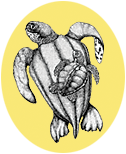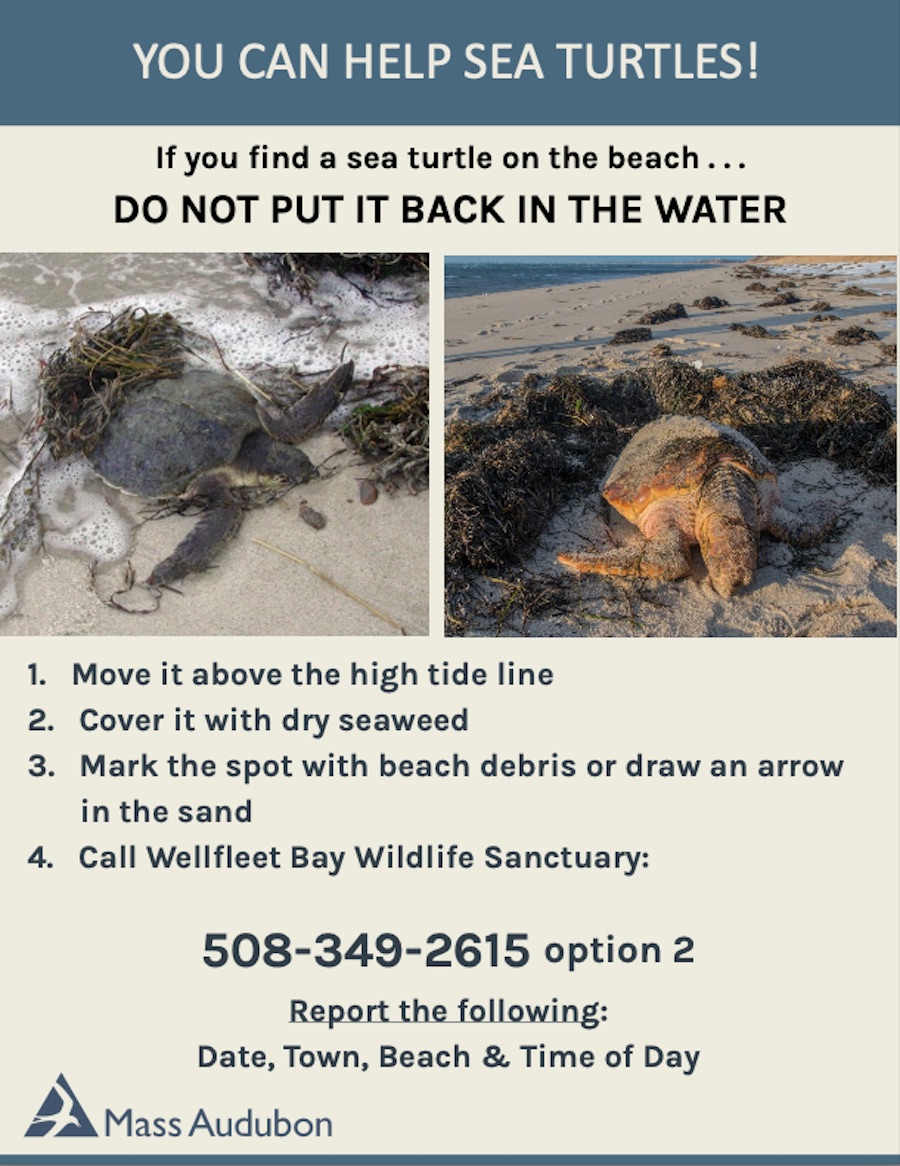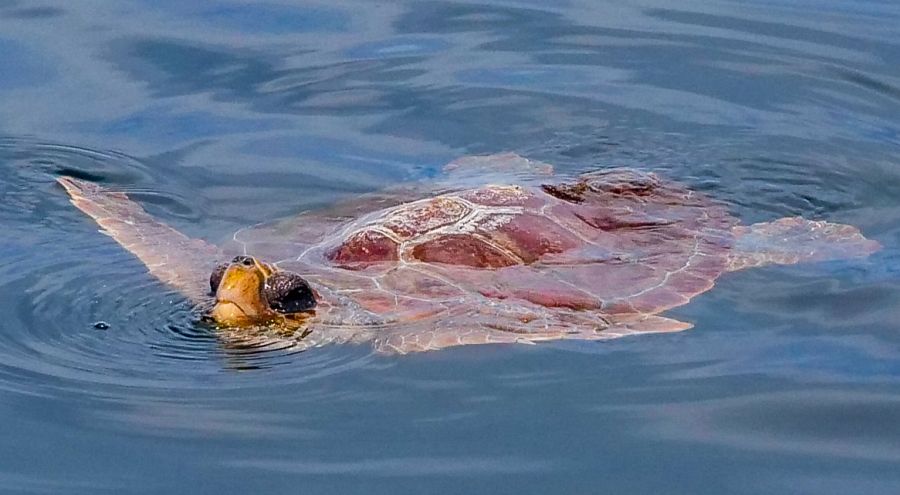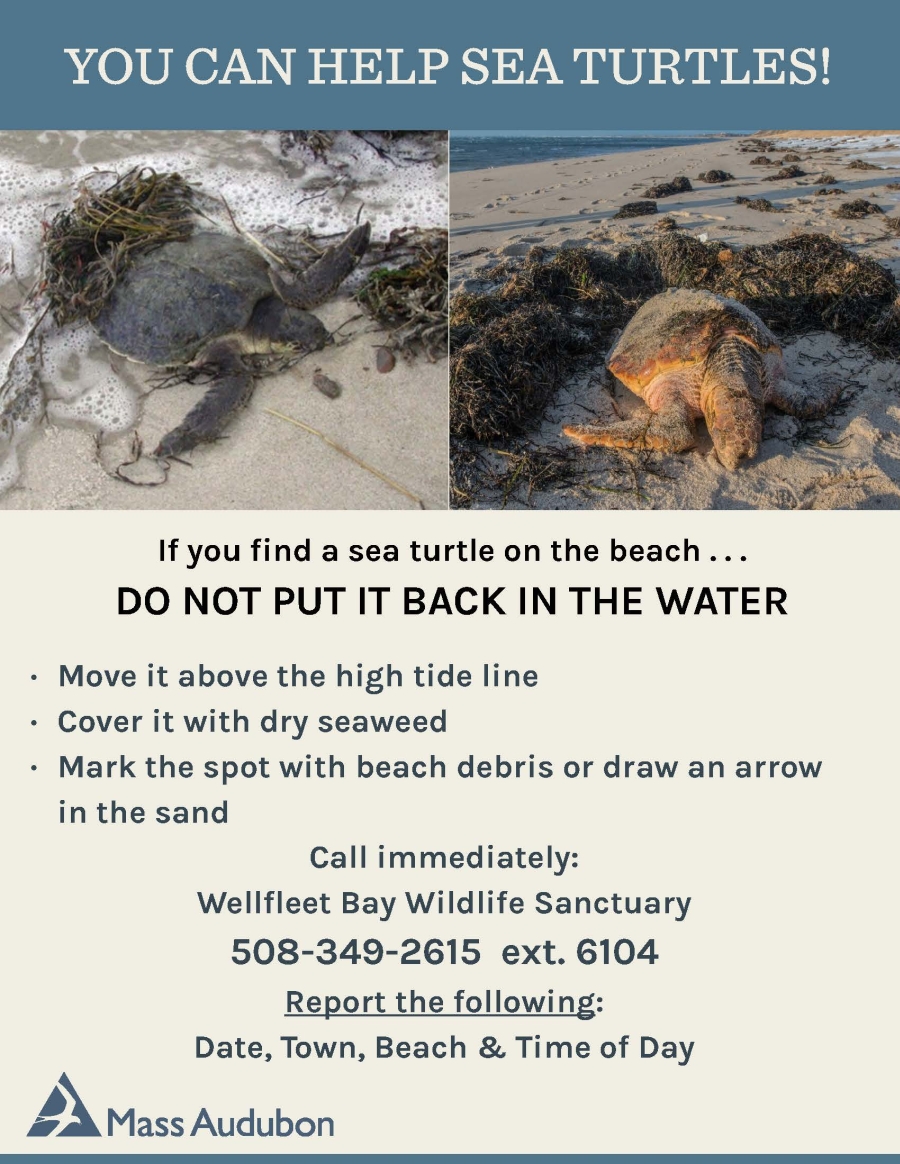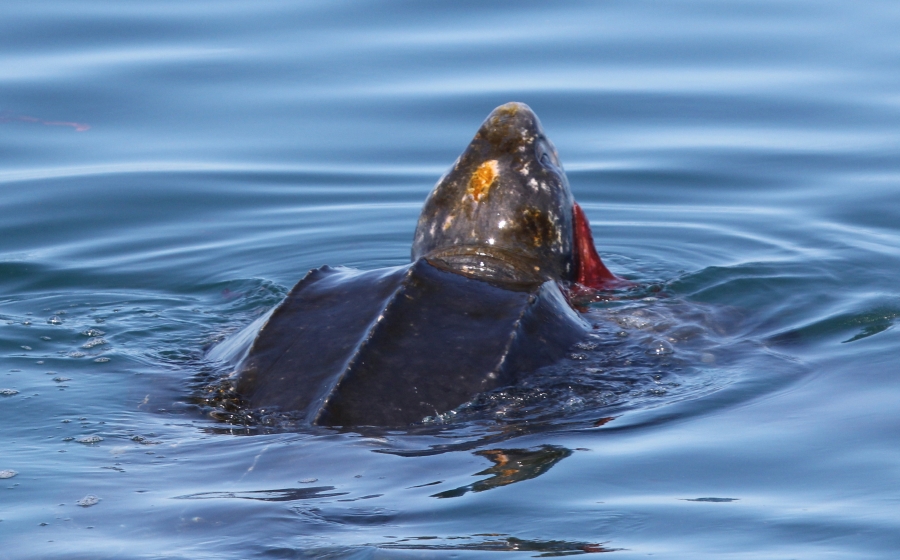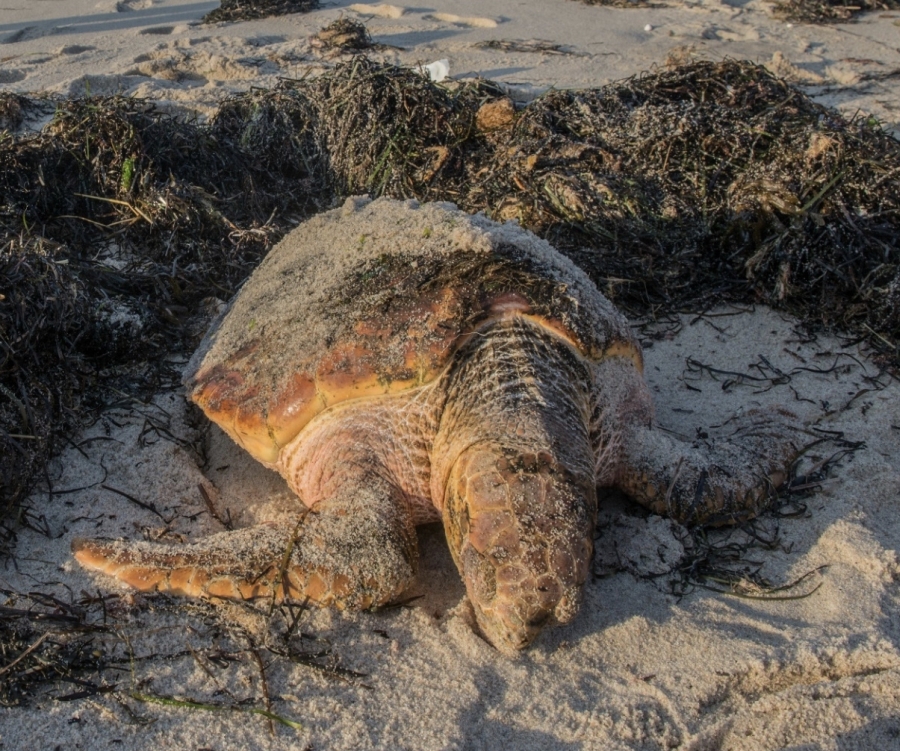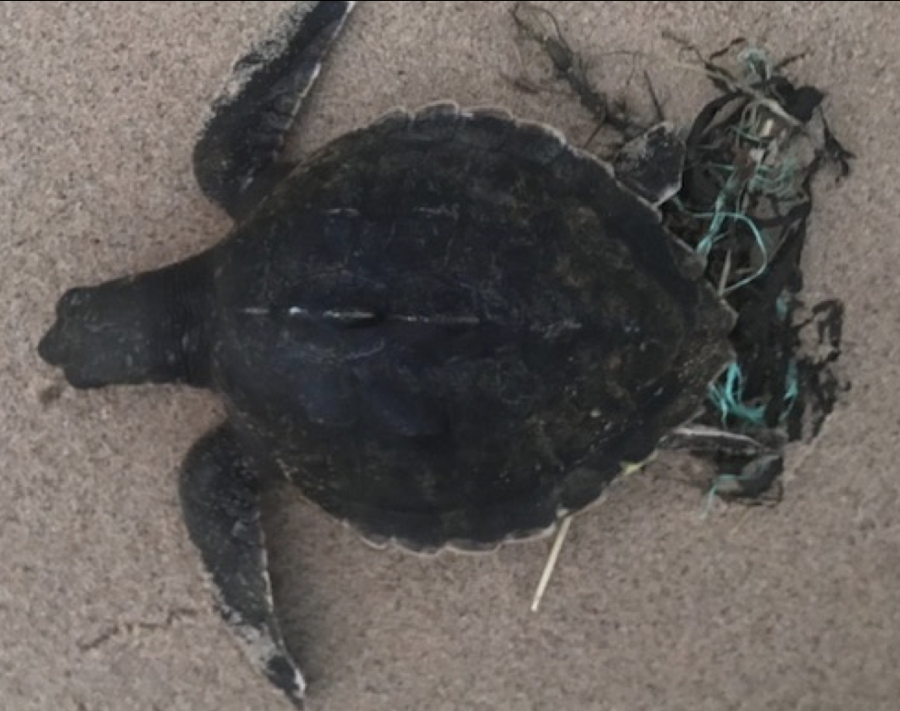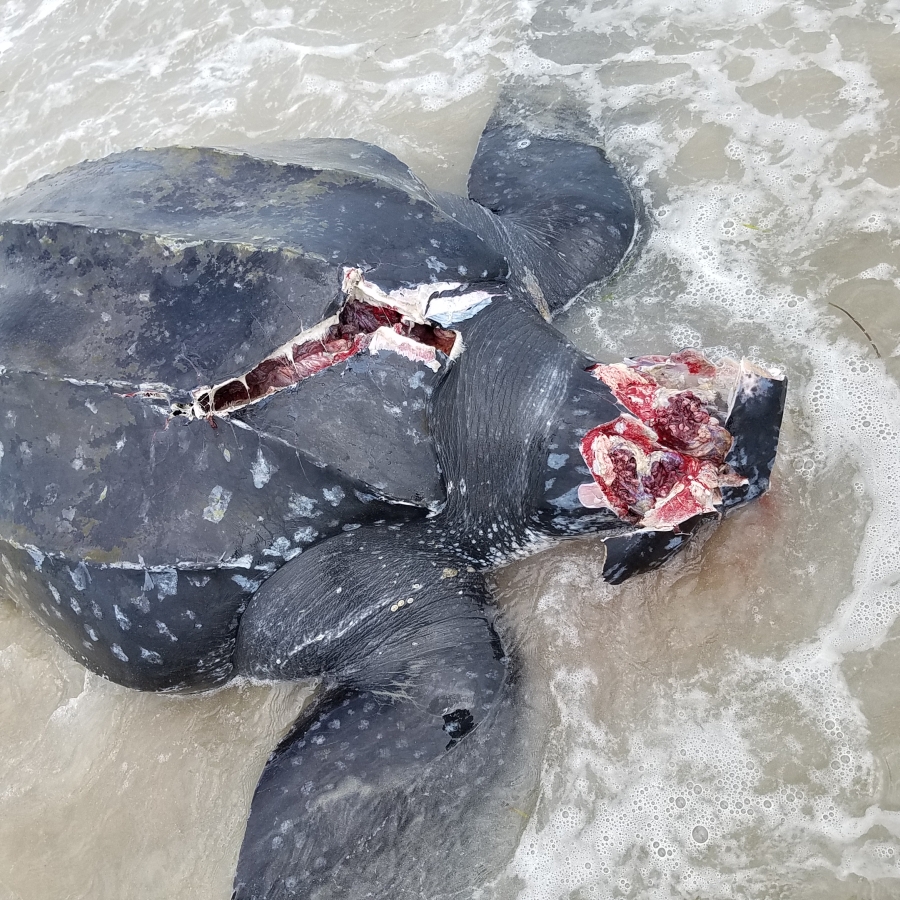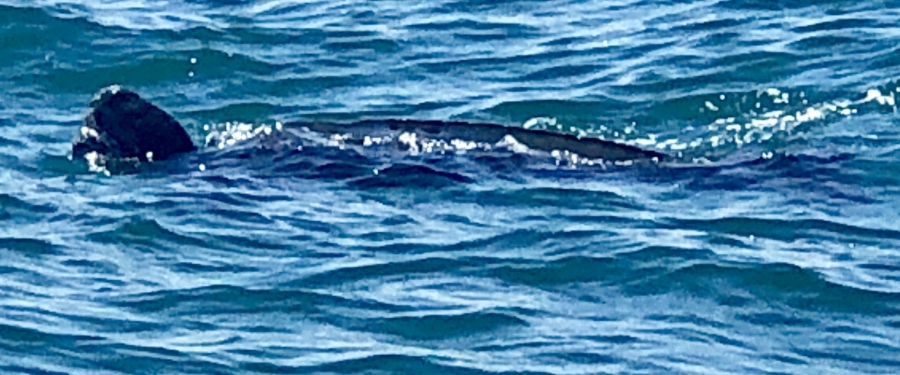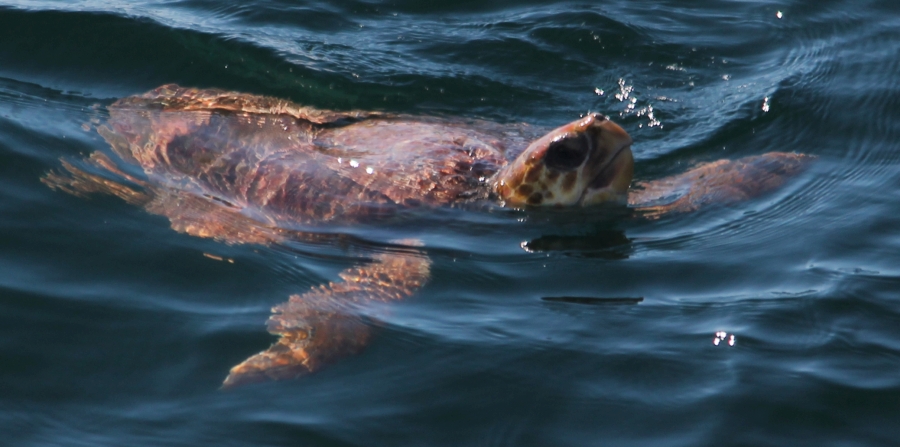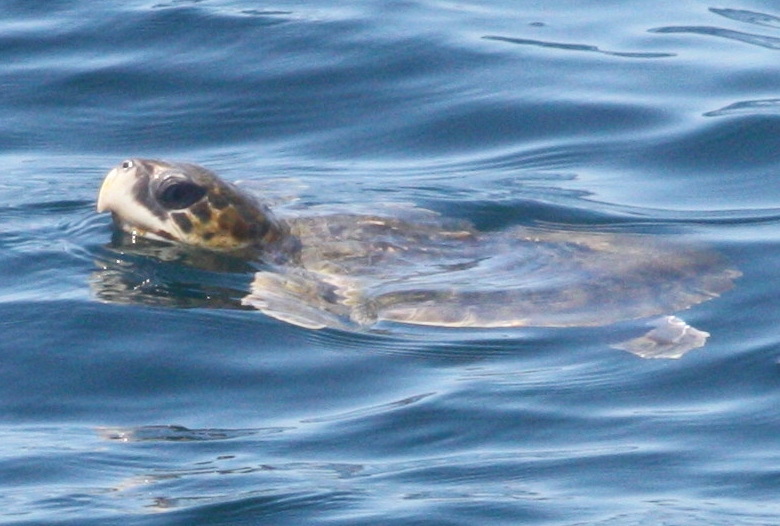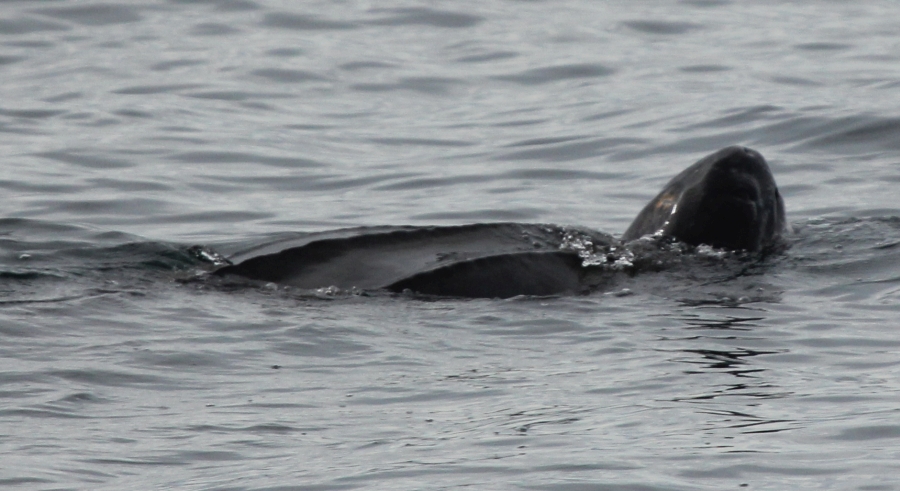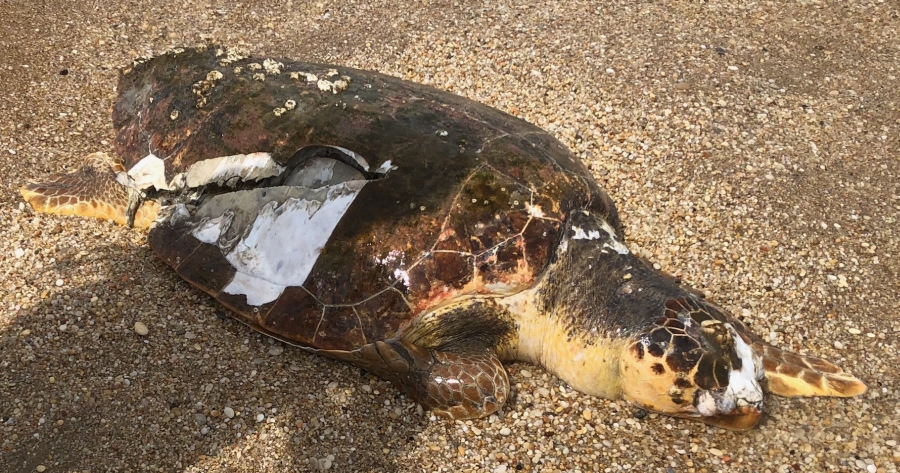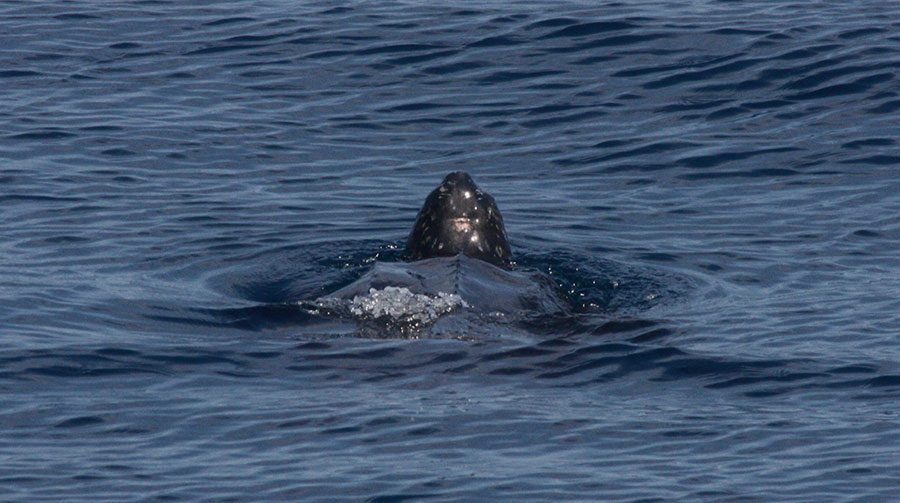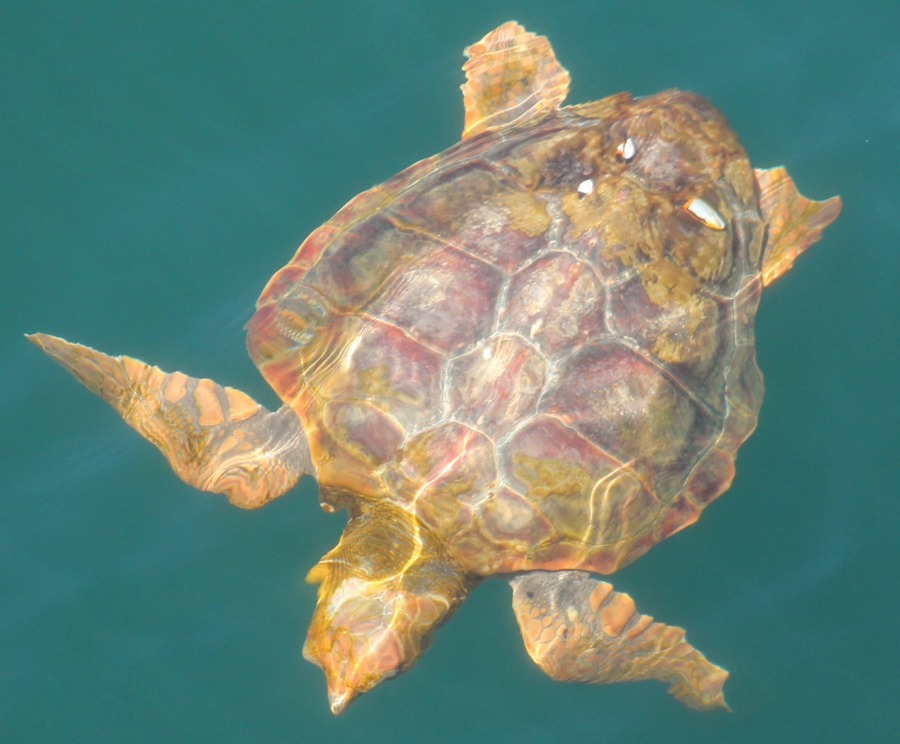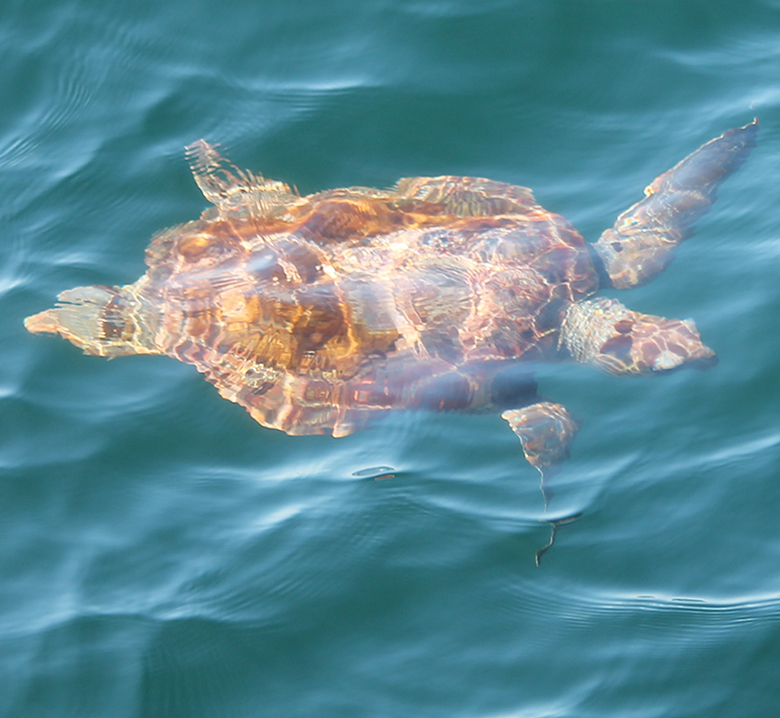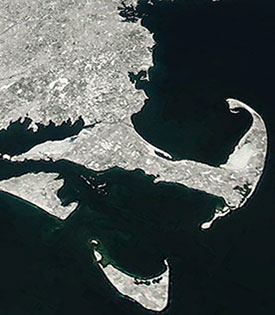The cold-stunned sea turtle season is here, when live Kemp's ridleys, loggerheads and green sea turtles wash ashore, mostly on the beaches surrounding Cape Cod Bay. Occasionally, cold-stunned sea turtles wash onto the north shores of Martha's Vineyard and Nantucket, and onto shores around Buzzards Bay. All of these species are federally protected, as "endangered" or "threatened". Mass Audubon's Wellfleet Bay Wildlife Sanctuary operates a large rescue operation for these cold-stunned sea turtles, using staff and over 200 trained volunteers.
If you're walking a beach and find a stranded sea turtle, do not put it back in the water. Assume it is alive and follow these steps:
- Move it carefully to above the high tide line
- Cover it completely with seaweed, preferably dry
- Mark the spot with beach debris or draw a large arrow in the sand
- Call immediately: Wellfleet Bay Wildlife Sanctuary at 508-349-2615, ext.6104
- Report the date, town, beach and time of day
If you find a beached turtle outside of Massachusetts, please call NOAA at 866-755-6622
